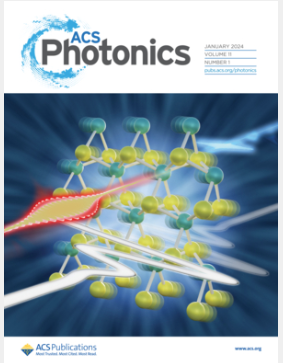二部自构形光学纠缠的自动模态分析
IF 6.5
1区 物理与天体物理
Q1 MATERIALS SCIENCE, MULTIDISCIPLINARY
引用次数: 0
摘要
纠缠是量子力学的一个独特特征。在光与物质的耦合系统中,纠缠表现为多部量子态的线性叠加(例如,由光场的多个空间、光谱或时间自由度参数化)。在二部系统中,Schmidt分解提供了独立的、可分离状态上纠缠结构的模态分解。虽然作为描述和测量纠缠的数学工具无处不在,但目前还没有一种通用的有效实验方法来将二部量子态分解为其施密特模式。在这里,我们提出了一种依赖于二部自配置光学的方法,该方法可以自动“学习”任意纯量子态的施密特分解。我们的方法是针对分布于光场空间或光谱自由度上的纠缠而设计的,并且可以通过对网络输出功率或巧合的变分优化来重建施密特模式和值。我们用自发参数下转换产生的双光子的光谱纠缠分析的数值例子说明了我们的方法,并为其实现和推广到其他光自由度(包括损失和杂质的影响)提供了实验指导。我们的方法提供了一种通用的、可扩展的方法来分析二部集成量子光子系统中的纠缠。本文章由计算机程序翻译,如有差异,请以英文原文为准。

Automated Modal Analysis of Entanglement with Bipartite Self-Configuring Optics
Entanglement is a unique feature of quantum mechanics. In coupled systems of light and matter, entanglement manifests itself in the linear superposition of multipartite quantum states (e.g., parametrized by multiple spatial, spectral, or temporal degrees of freedom of a light field). In bipartite systems, the Schmidt decomposition provides a modal decomposition of the entanglement structure over independent, separable states. Although ubiquitous as a mathematical tool to describe and measure entanglement, there exists no general efficient experimental method to decompose a bipartite quantum state onto its Schmidt modes. Here, we propose a method that relies on bipartite self-configuring optics that automatically “learns” the Schmidt decomposition of an arbitrary pure quantum state. Our method is designed for entanglement distributed over spatial or spectral degrees of freedom of a light field and can reconstruct the Schmidt modes and values by variational optimization of the network’s output powers or coincidences. We illustrate our method with numerical examples of spectral entanglement analysis for biphotons generated via spontaneous parametric down conversion and provide experimental guidelines for its realization and generalization to other degrees of freedom of light, including the influence of losses and impurities. Our method provides a versatile and scalable way of analyzing entanglement in bipartite integrated quantum photonic systems.
求助全文
通过发布文献求助,成功后即可免费获取论文全文。
去求助
来源期刊

ACS Photonics
NANOSCIENCE & NANOTECHNOLOGY-MATERIALS SCIENCE, MULTIDISCIPLINARY
CiteScore
11.90
自引率
5.70%
发文量
438
审稿时长
2.3 months
期刊介绍:
Published as soon as accepted and summarized in monthly issues, ACS Photonics will publish Research Articles, Letters, Perspectives, and Reviews, to encompass the full scope of published research in this field.
 求助内容:
求助内容: 应助结果提醒方式:
应助结果提醒方式:


